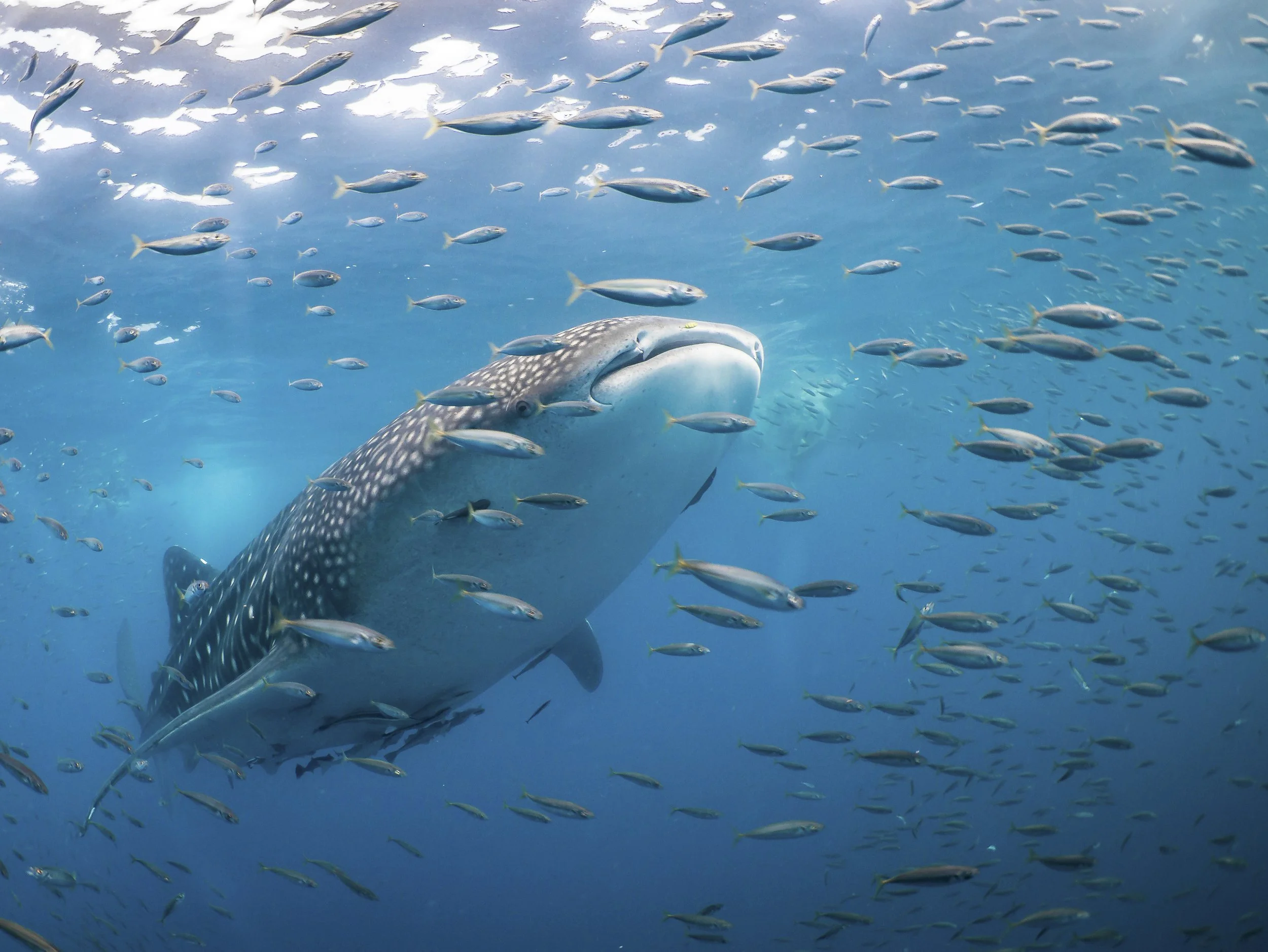New Study Highlights the Need for Long-Term Population Monitoring of the World’s Largest Fish
Whale sharks off Tanzania are unusually resident, allowing the application of robust capture-mark-recapture modeling techniques to estimate their population trend
While mortalities are rare, they seem to keep the population from recovering, highlighting the conservative life history of whale sharks
Modeling techniques revealed that only a dramatic ~25% change in abundance could be detected confidently over the study period
Due to slow abundance trend detection, whale sharks need effective protection now to help them recover from severe population declines over the past decades
Photo Credit: Dr. Simon J. Pierce
A new study by researchers from the Marine Megafauna Foundation (MMF) and their collaborators has been published in the journal Endangered Species Research and highlights the need for long-term population monitoring and precautionary management of whale sharks. In their case study, a small population of whale sharks monitored over 8 years showed a stable trend, however, modelling techniques revealed that only a dramatic ~25% change in abundance could be detected confidently over the study period. Such steep decreases could quickly lead to the demise of a population before management interventions can stop the decline. Precautionary management is, therefore, crucial to saving this endangered species from extinction. Since smaller changes in abundance take longer to detect, long-term monitoring is important to determine these trends and adjust protection strategies if needed.
The new study investigated the abundance and population trends of whale sharks aggregating off Mafia Island in Tanzania. The researchers routinely identified the same individuals and their high residency meant that capture-mark-recapture (CMR) models would work well here. These models calculate parameters such as the probability of new sharks entering the population and the probability of re-sighting an individual. From these parameters, the researchers could then estimate the population size in each year and derive the trend from those figures.
Dr. Chris Rohner, the lead author of the study and Principal Scientist with MMF, says, “Mafia Island in Tanzania was the perfect place for this investigation. We see many of the same whale sharks year after year and have gotten to know them really well.” MMF Senior Scientist Dr. Steph Venables adds, “these high resighting rates also mean that the models estimated abundance with a high level of precision.”
Photo Credit: Dr. Simon J. Pierce
Whale sharks can be identified by their spot pattern, similar to fingerprints in humans. Instead of capturing, marking, and recapturing individuals, like the name of the models suggests, whale sharks can be identified without interference. Dr. Clare Prebble, Senior Scientist at MMF, explains that, “to get the data to monitor whale sharks, we swim alongside each shark and take a photo of their unique spot pattern. Back on land, we let an algorithm compare the spots of the sharks we saw to the whole Sharkbook Database, where it either re-identifies them as previously seen sharks, or we get to add a new one to the catalogue.”
The number of whale sharks in Tanzania fluctuated over the study period, but the overall trend was stable. There are few direct threats to whale sharks at Mafia Island, although mortalities in fishing nets in the country are sometimes reported. “Our study shows that even a small level of mortality from human causes can stop whale sharks from recovering from historical overfishing in the Indian Ocean. Whale sharks take decades to reach adulthood and probably only breed every few years. We need to protect whale sharks, particularly at important aggregation sites like Mafia Island, to help them rebuild a healthy population,” says Dr. Simon Pierce, MMF Founder and global authority on whale shark conservation.
The study estimated a total of 208 whale sharks spent time at Mafia Island over the 8 years. Dr. Baraka Kuguru from the Tanzania Fisheries Research Institute adds, “this is a comparatively small population and we need to look after these gentle giants. Whale sharks are important to Mafia Island’s economy, attracting marine tourists and local fishers often find their catch when they see whale sharks.”
Photo Credit: Dr. Simon J. Pierce
Additional modelling of the abundance trends showed that only dramatic decreases or increases would have confidently been detected over the study period. Despite the comparatively high re-sighting rates at Mafia Island, abundance fluctuations over the years were still too large to detect more subtle trends. Dr. Jesse Cochran from the King Abdullah University of Science and Technology concludes, “our case study in Tanzania highlights that whale sharks need protection even when abundance trends are not yet conclusive, which is known as precautionary management. Long-term monitoring over several decades is key to accurately assessing their trend.”
Notes to Editors
Anyone with an underwater camera can join the whale shark monitoring effort by submitting their identification photos to the global database www.sharkbook.ai. It’s a great help to researchers and a fun way for citizen scientists to get involved as each time ‘your’ shark is re-sighted, you get an update in your inbox.
This study was led by the Marine Megafauna Foundation in collaboration with the King Abdullah University of Science and Technology (KAUST) and the Tanzania Fisheries Research Institute (TAFIRI). Funding was provided by Aqua-Firma, the Shark Foundation, WWF Tanzania, WWF Sweden/SIDA, Waterlust, two private trusts, and MMF’s supporters from The Constellation program.
For questions about this press release, please contact:
Dr. Chris Rohner – Principal Scientist, Marine Megafauna Foundation
Email: chris@marinemegafauna.org
The Marine Megafauna Foundation (MMF) was created in 2009 to research, protect, and conserve the populations of threatened marine megafauna around the world. MMF’s headquarters are located in Tofo, Mozambique, where they operate as Associação Megafauna Marinha (AMM). ‘Megafauna’ are large marine species such as sharks, rays, and sea turtles. For further details, please see www.marinemegafauna.org or follow us on Instagram, Facebook, Twitter, and LinkedIn.












